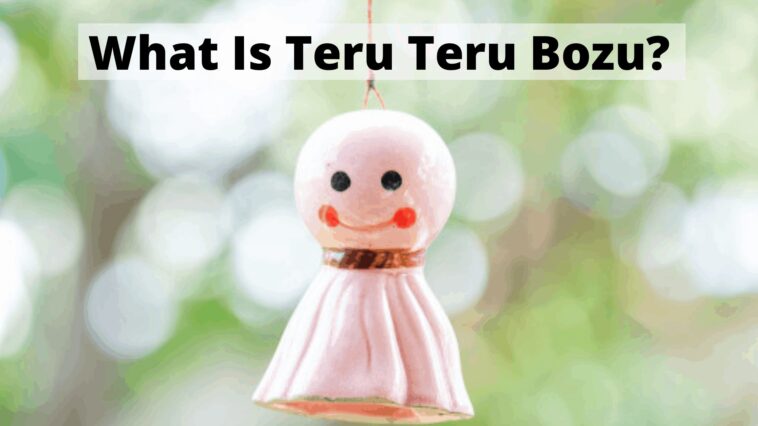Wondering what is teru teru bozu? Well, it’s another charm just like the ofudas. Find out more here!
“Teru-teru-bozu, teru bozu/ Do make tomorrow a sunny day/ Like the sky in a dream sometime/If it’s sunny I’ll give you a golden bell
Teru-teru-bozu, teru bozu/ Do make tomorrow a sunny day/ If you make my wish come true/ We’ll drink lots of sweet rice wine
Teru-teru-bozu, teru bozu/ Do make tomorrow a sunny day/ But if the clouds are crying/ Then I shall snip your head off”
Page Contents
What is Teru teru Bozo?

Teru Teru Bozu is a small traditional Japanese doll that is handmade with a cloth or white paper. Japanese farmers began hanging it outside their homes with a string on the windows. They are similar to the dolls made for Halloween. They are believed to stop the rain and guarantee a sunny tomorrow. Teru Teru Bozu literally translates to “shine shine monk”.
These loosely translated lines belong to a 1921 children’s rhyme from Japan that gives details of the origin and history of the teru teru bozu story.
“Rain, rain go away” is what I sang in kindergarten when I wanted the rain to stop. Nursery rhymes and songs meant for children seem to have had a rather morbid tone back in the day.
What is teru teru bozu dolls used as?
I personally do not appreciate muddy puddles making my shoes dirty and having to walk while tiny raindrops try to pierce my face. The monsoon season can be a real nightmare for some people (including me).
Japan knows first hand what devastating rain looks like and the damage that it can cause. Japan experiences heavy rains during the months of June and July and these rains can cause some serious damage.
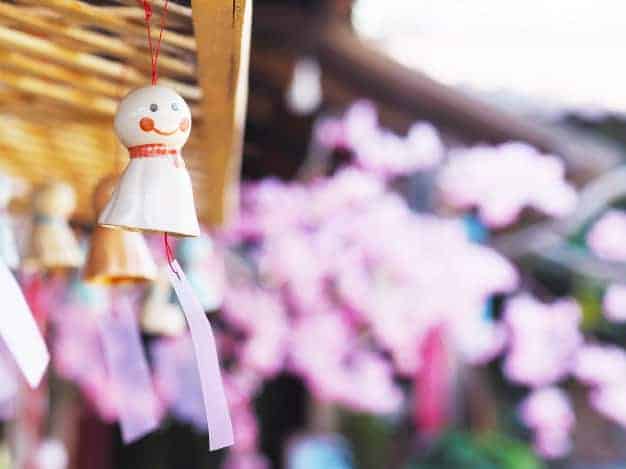
So it is no wonder that the Japanese have a traditional talisman that is used to ward off the rains, and it comes with its very own poem. What is teru teru bozu is quite simple to answer.
When the Japanese wish for the skies to clear and do not want to indulge in the melancholic rain, they make little dollies and hang them outside their homes.
This is a superstitious belief that dates back to the 20s and has been passed down from generation to generation. This tradition of making these dolls is taught to little children and is well practiced.
Related: Do you know about the Obon festival? Read more about it here!
What is teru teru bozu’s significance?
Teru teru bozu refers to handmade dolls, crafted from tissue or cloth. They are usually strung up with a piece of string and have a face drawn on them.
These little ghost-like dolls are hung outside windows and doors to ask for sunny days.
They are especially seen hanging around Japan during the tsuyu season, which is the Japanese word used to refer to the rainy season, and special occasions like the harvest festival.
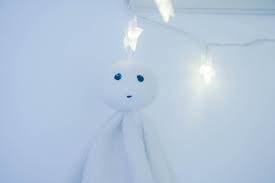
The words ‘teru’ translates to shine and ‘bozu’ translates to someone who has gone bald or a Buddhist monk. Like every other talisman, teru teru bozu also has many legends and myths attached to it.
Related: Know more about the Hinamatsuri Girl’s Day festival in Japan, here!
We may never know what the true origin is, but one of the more famous backstories that talk about how these cute little dollies came into existence is the one about a ‘Good Weather Monk’. So gather around kids.
It’s story time!
Back in feudal Japan, there once was a village whose inhabitants were victims of continuous, devastating rains. Farmlands were being destroyed and in need of immediate rescuing.
A Buddhist monk assured a feudal lord that he could clear the rain clouds and bring in sunny days. However, the rains did not stop and the sun did not shine.
Related: Here’s your guide to celebrating Children’s day Kodomo No Hi in Japan!
This angered the lord and he had the monk’s head cut off as punishment. His head was then wrapped in cloth and hung outside to bring in sunshine.
Okay, so maybe that is not the best choice for a bedtime story. A slightly less scary myth is the one about these dolls being a representation of Haribo, a Yokai spirit from the mountains who is supposed to bring in good weather.
Another version of how teru teru bozu came into existence says that these little dolls aren’t a portrayal of a Buddhist monk but that of a little girl carrying a broom.
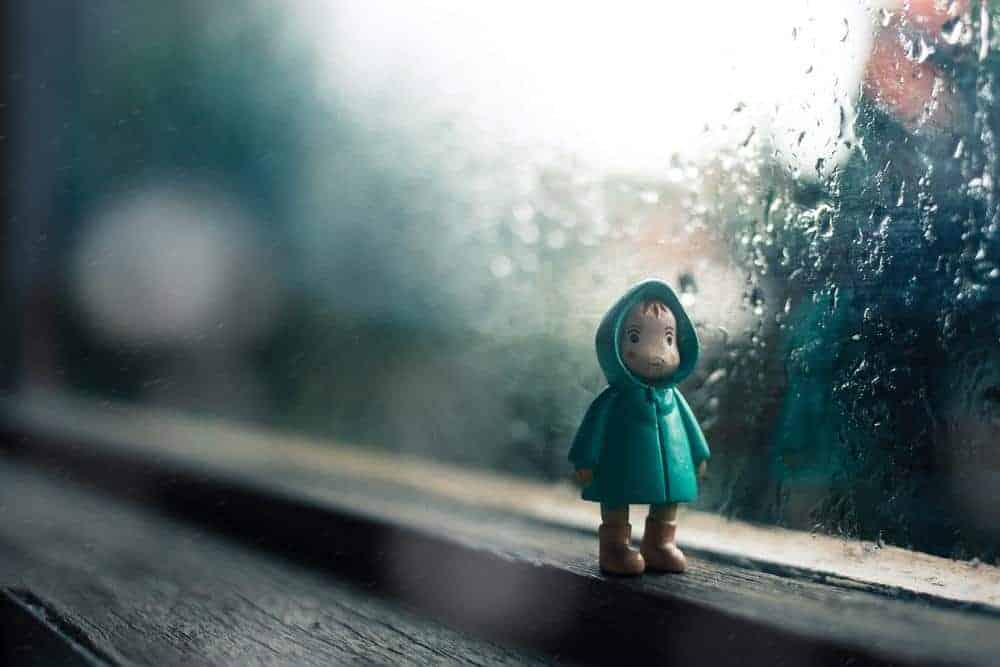
It is believed that this practice was brought into Japan from China during the Heian period and that this broom carrying girl will sweep away the rain clouds and bring in sunshine. The story goes a little like this.
While the people were experiencing persistent and heavy rainfall, a voice came down from the heavens and asked that a certain young woman be sent outside. If this didn’t happen, the people were warned that their entire city would be flooded.
So the sacrificial lamb, A.K.A, aforementioned beautiful young lady was sent outside with a broom as a symbol of her going to the heavens and sweeping away the rain clouds.
To honour the sacrifice and courage of this young woman, it is believed that the young women of Japan made paper cut out figures, a skill that the girl carrying the broom had mastered.
These paper cut outs were called Souseijou in Japanese. This literally means “sweeping fine weather girl”. Over the years, this has been modified into teru teru bozu.
According to tradition, these teru teru bozu dolls are hung outside and prayers are offered to bring in the sun and stop the rains.
If the doll does its job well and your wish is granted and the rains stop, the teru teru bozu is rewarded for a job well done. You give your teru teru bozu a face, pour a little holy sake over it, and send it downstream in a river.
Related: Here’s all you need to know about Japanese Nenjago New Year’s Cards!
If the rain does not stop, the head is snipped off and the doll is thrown away.
Talk about harsh punishment. For those of you who do not know what sake is, it is an alcoholic beverage that is made by fermenting rice that has been polished to remove the bran.
Back in the olden days, teru teru bozu were hung from the branches of the nandina or bamboo plant, as this was considered to be sacred. This was used to protect and help in the exorcising of demons.
The Japanese sure know their way around creepy folk tales and nursery rhymes. But hey, at least there is some sake involved! I’m sure your question of what is teru bozu is clear now.
Related: Guide To Japanese Lucky Charms Omamori For The New Year
What does upside down teru teru bozu mean?
In the tradition of teru teru bozu, hanging the doll upside down is believed to be a way to bring about good weather. The idea is that by inverting the doll, one is symbolically turning the bad weather upside down, causing it to change into good weather.
When a teru teru bozu is hung upside down, it is often done in the hope of bringing clear skies and sunshine. This practice is especially common during rainy or cloudy days when people desire a break from inclement weather.
The belief in the power of the upside-down teru teru bozu is rooted in the superstition that turning something symbolic or representative of a certain condition or state can influence or reverse that condition.
By flipping the doll, the person expresses their desire to reverse the rainy or cloudy weather into a sunny one.
How To Make Your Own Teru Teru Bozu?
With the monsoon season coming in soon, I think we could all use a lesson on how to make teru teru bozu.
We’ve cancelled plans for the whole of 2020 due to the pandemic, we do not need to cancel any more plans because of rains.
Also, for those of you who would like to bring in a little piece of Japanese culture into your homes, making a teru teru bozu is an inexpensive and easy way to do so.
You can make these cute dolls with the scrap material that you have lying around your house.
While making teru teru bozu, two squares pieces of white cotton cloth or tissue are used. Besides this, you will also require a rubber band or string, cotton balls, and markers.
If you are using tissue, make a ball by scrunching up a few sheets of tissue paper together. This will be used to give the head of your doll its shape.
Cover this ball of tissue with another tissue and twist. If you are using a cotton ball, repeat the same process.
Tie this off with a piece of string or rubber band, depending on what you have available. This becomes the head of the doll.
The same steps can be followed while using cotton cloth. Traditionally, teru teru bozu does not have a face. The face is drawn on the doll as a reward for granting clear skies. But you can draw on a face if you like.
You can now add another piece of string to your doll and hang it outside your windows and doors. What is teru teru bozu made up of is quite simple and easy so go make your own now!
Make sure to have some sake around to reward your teru teru bozu when the sun comes out the next day.
Bozu Dolls: Summing it up
What is teru teru bozu, a superstition or tradition?
Tragic story aside, teru teru bozu are an absolutely adorable piece of décor for your home. It is also a great way of keeping kids (and adults) engaged while it is pouring outside and you are all cooped up inside.
Just grab some supplies from the stationary drawer and you’re all set to make these little dollies. Is it just me or do these dolls look a lot like Casper the ghost?
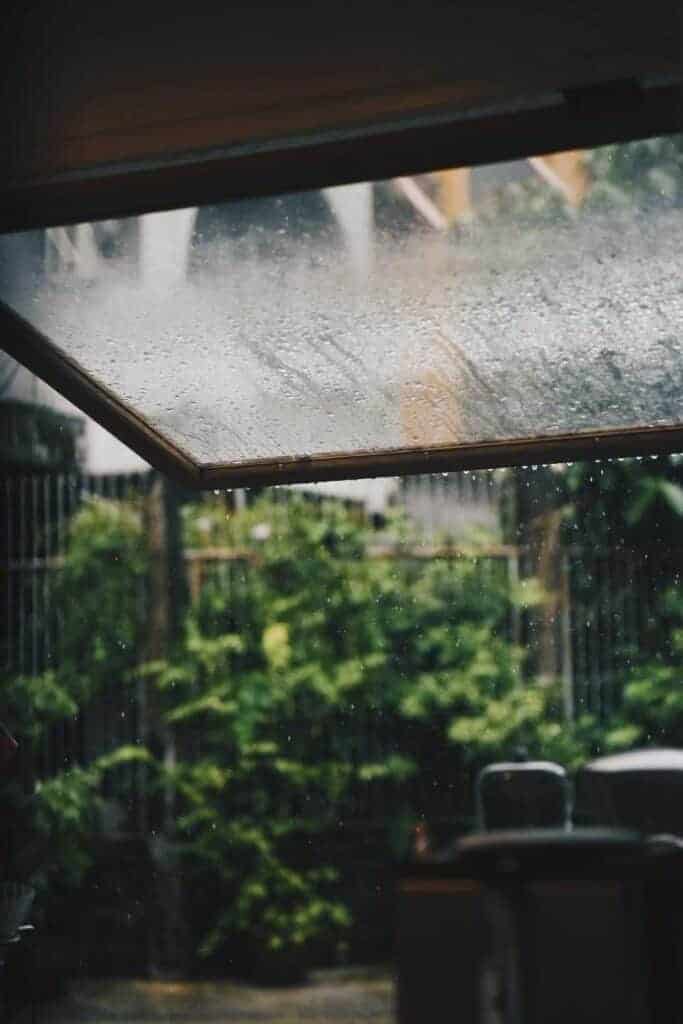
Is teru teru bozu a ghost?
Teru teru bozu is often depicted as a small white doll or charm, but it is not typically considered a ghost in the supernatural sense.
The appearance of the teru teru bozu may resemble a ghost or a bald-headed monk due to its round shape and white color, but it is not intended to represent an actual spirit or supernatural entity.
The term “teru teru bozu” itself can be translated as “shine, shine, monk,” which reflects the resemblance to a monk’s bald head.
Out of all the superstitions and traditions that are seen across the world, I think of what is teru teru bozu as one of the cutest and easiest charms to make.
Come to think of it, even the horrifying backstory attached to it is not as bizarre as some of the other stories we get to hear.
The rainy season brings along with it a sense of melancholy and it is hardly as romantic as portrayed in movies. Date night does not become more romantic once it starts pouring. Sweet kisses in the rain are a lie!
Rainy days are squishy shoes, not so great wet hair and cancelled plans. That just sounds depressing and that just cannot be.
I don’t know about you, but the next time I have plans and the skies begin to get gloomy, I am going to make my very own teru teru bozu and pray for a sunny tomorrow.
Maybe even pour a little sake over it the night before as a bribe. make your own bozu and answer your own question of what is teru teru your way!
Well, here is hoping that the sun shines tomorrow!


